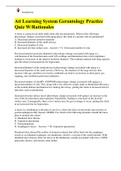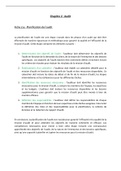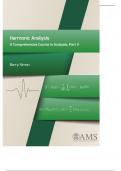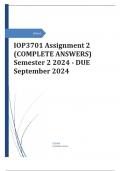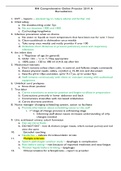Essay
Realist Explanations of patterns and trends in crime and deviance essay
- Module
- Crime and Deviance
- Institution
- OCR
Essay assessing the usefulness of realist (left and right) explanations of patterns and trends in crime and deviance. Awarded 37/40 (A*) by sociology teacher :) OCR A Level Sociology H580
[Show more]




